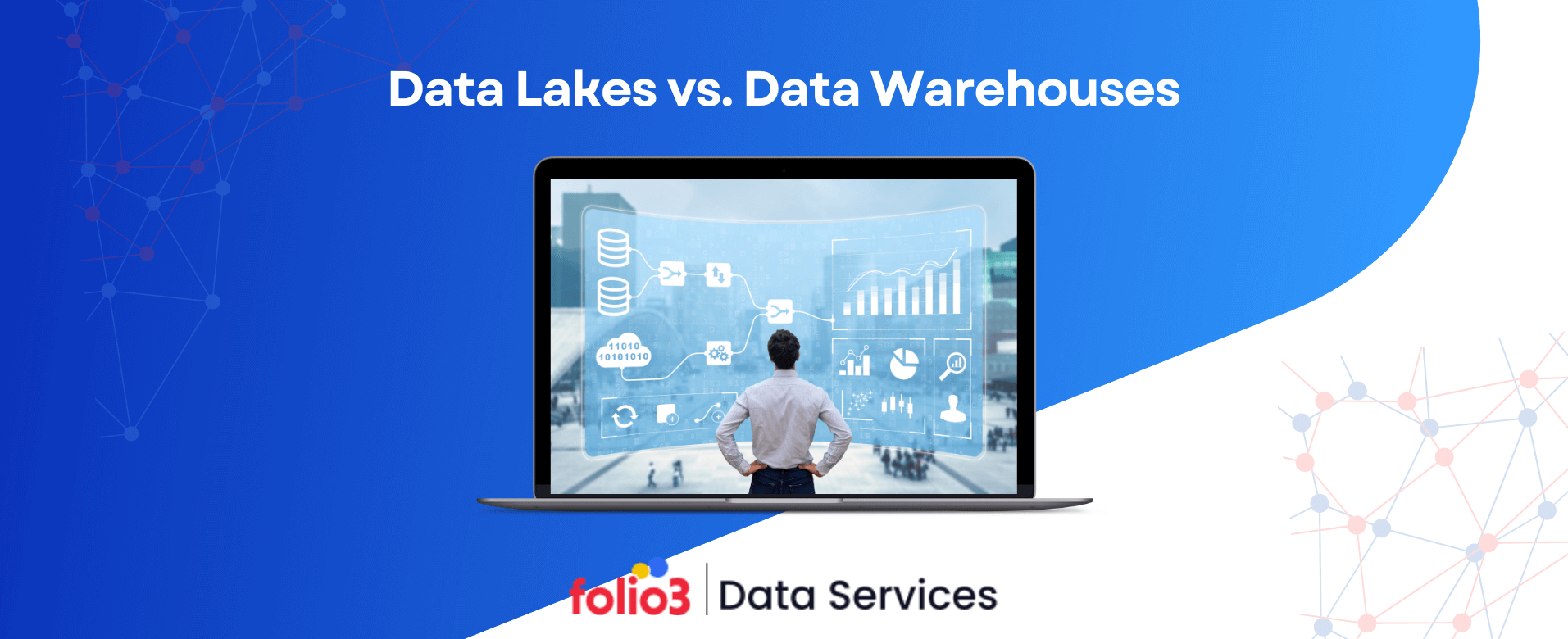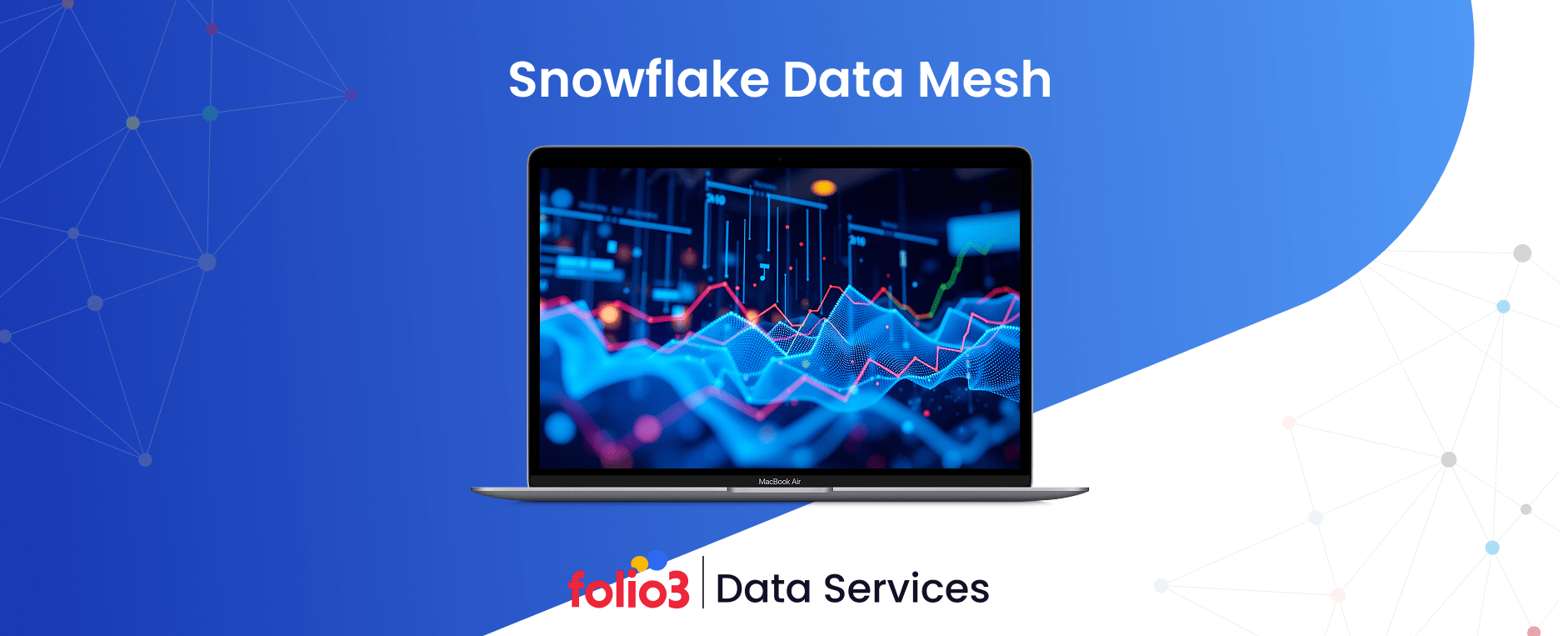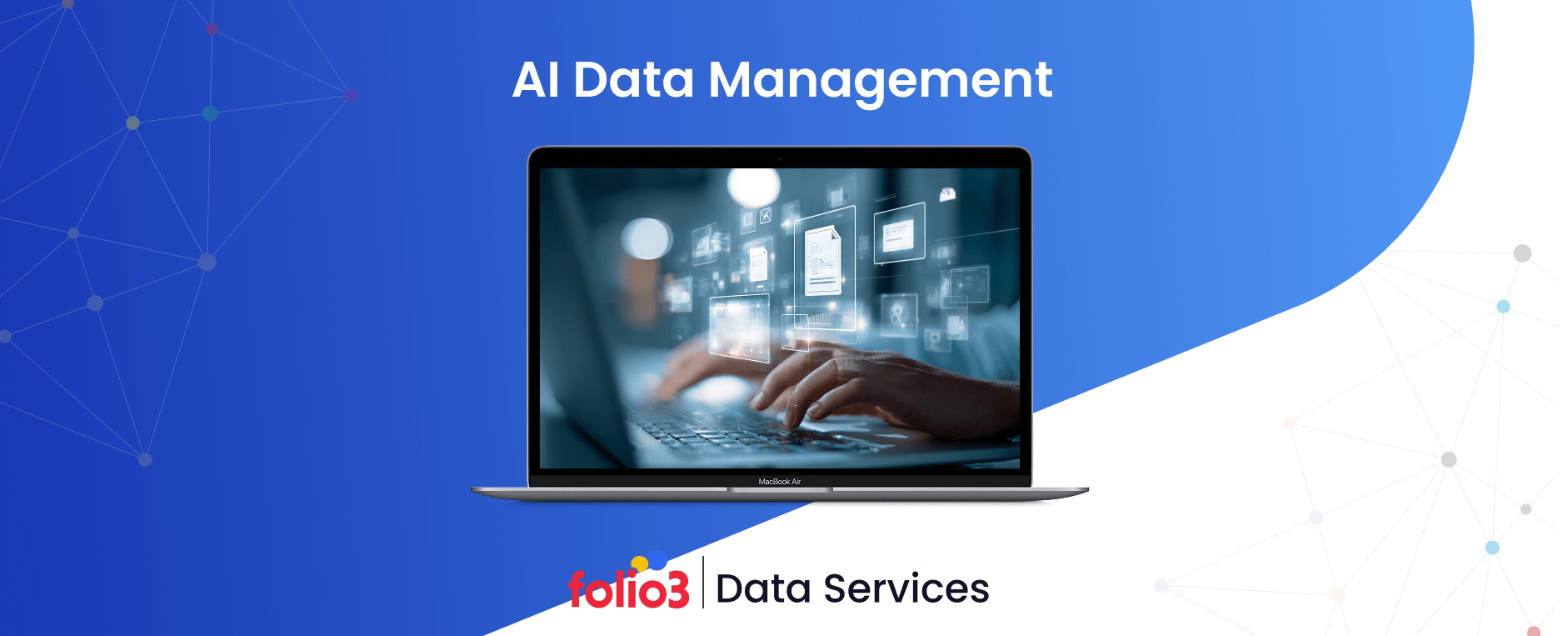Businesses are grappling with ever-increasing volumes of data. To stay competitive, they need efficient ways to store, process, and analyze vast quantities of information. Two primary solutions have emerged: data lakes and data warehouses. While both play vital roles in managing data, they serve different purposes and offer distinct features.
This blog will explore the differences, benefits, challenges, and use cases of data lakes and data warehouses.
What is a Data Lake?
A data lake is a storage repository designed to hold large amounts of raw, unprocessed data in its original format. Unlike traditional databases, data lakes use a schema-on-read approach, meaning data is structured as it’s retrieved for analysis rather than when stored.
This flexibility allows for storing unstructured, semi-structured, and structured data, making data lakes ideal for complex analytics and machine learning applications, and is a crucial component of robust data engineering services.
Key Characteristics of Data Lakes
Here are the key characteristics of Data Lakes explained in detail:
Schema-on-Read
In a data lake, the data’s structure or schema is not defined when data is ingested but rather when it is accessed or analyzed. This approach, known as schema-on-read, allows data to be stored in its raw format and only structured as needed during processing.
This flexibility makes it easier to work with various data types, such as structured, semi-structured, and unstructured data, without requiring upfront data modeling. This adaptability is critical when developing a data lake project plan to address complex analytics needs.
Scalability
Data lakes are designed to handle massive volumes of data, scaling effortlessly as the amount of data grows. This scalability is especially important in big data scenarios where continuous data streams are ingested, such as IoT sensor data, social media feeds, or large datasets generated by organizations.
Cloud-based data lake platforms like AWS S3, Azure Data Lake, and Google Cloud Storage offer practically unlimited storage capacity, making them suitable for storing enormous datasets when conducting a data warehouse to data lake migration.
Unstructured Data Support
Unlike traditional data storage solutions that mainly deal with structured data, data lakes can store unstructured data in various formats, including text files, videos, images, logs, and JSON documents. This capability allows organizations to retain all kinds of data, whether from social media, clickstream data, or documents, without transforming it into a structured format first.
This unstructured data can later be processed and analyzed to extract insights. This unstructured data can later be processed and analyzed by a data strategy consultant to extract insights.
Common Use Cases
Here are Common Use Cases for Data Lakes explained:
Big Data Analytics
Data lakes are well-suited for businesses that need to store and analyze large datasets due to their capacity to handle massive amounts of diverse data types. They allow companies to ingest, store, and process structured, semi-structured, and unstructured data, such as social media feeds, web logs, or sensor data, all in one place. The flexibility of data lakes supports data exploration and discovery, making it easier to derive insights from complex datasets in big data environments.
Machine Learning Projects
Machine learning (ML) and artificial intelligence (AI) require diverse datasets for training models. Data lakes enable organizations to store different data types, including text, audio, video, images, and structured datasets, providing the variety needed for ML/AI projects. With a data lake, data scientists can quickly access raw data and build models that use large, varied datasets to improve the accuracy and performance of algorithms.
With a data lake, data scientists can quickly access raw data and build models that use large, varied datasets to improve the accuracy and performance of algorithms, which also aligns well with a data warehousing strategy for advanced analytics.
Real-Time Analytics
Data lakes can support real-time data ingestion, allowing businesses to analyze data as it’s generated. This is useful for applications like real-time monitoring, fraud detection, or operational dashboards where immediate insights are crucial. Technologies such as streaming data platforms and IoT integrations work seamlessly with data lakes to ingest data continuously, providing up-to-the-minute analytics for informed decision-making.
Popular Platforms
Here are some Popular Platforms for Data Lakes. These platforms are popular choices for building data lakes due to their scalability, integration capabilities, and robust support for big data analytics:
Amazon S3 (AWS)
Amazon Simple Storage Service (S3) is one of the most widely used data lake platforms, offering scalable and durable storage for large volumes of data. It integrates seamlessly with other AWS services, enabling advanced data processing, analytics, and machine learning tasks. By leveraging data lake consulting, organizations can maximize S3’s flexibility to store different data types, such as structured, semi-structured, and unstructured data, making it a top choice for building efficient and scalable data lakes.
Azure Data Lake Storage (Microsoft)
Azure Data Lake Storage (ADLS) is a highly scalable and secure data storage service designed for big data analytics. It combines the power of Azure Blob Storage with an added layer for big data capabilities, allowing for the easy management of massive data volumes. It integrates well with Azure’s analytics services, like Azure Databricks, Synapse Analytics, and HDInsight, supporting use cases such as real-time analytics, AI, and data science projects.
Google Cloud Storage
Google Cloud Storage (GCS) provides a unified storage solution that supports different data formats and types, from structured datasets to unstructured content such as images and videos. With its integration into the Google Cloud ecosystem, GCS works well for analytics and machine learning applications, utilizing services like BigQuery and Dataflow for processing and analyzing data. I
ts global availability ensures reliable access to data, supporting both batch processing and real-time data ingestion.
What is a Data Warehouse?
A data warehouse is a system specifically optimized for querying and reporting on structured data. It employs a schema-on-write approach, where data is pre-processed and organized before being stored. Data warehouses are optimized for business intelligence (BI) tasks, enabling high-performance querying and consistent data analysis.
Key Characteristics of Data Warehouses:
Here are the key characteristics of Data Warehouses:
Schema-on-write
In data warehouses, data is structured before storage, following a predefined schema. This approach ensures data consistency and makes it easier to perform queries and analysis since the data is already organized and processed according to specific formats.
High-Performance Querying
Data warehouses are designed for fast retrieval of structured data, allowing for optimized query performance. Indexing, partitioning, and other techniques improve query speed and support complex analytical operations, making data warehouses suitable for business intelligence tasks.
Data Consistency
Data warehouses ensure data integrity through stringent governance and data quality measures. Processes such as ETL (Extract, Transform, Load) help clean, validate, and standardize data before it’s stored, maintaining reliable and accurate datasets for analysis.
Common Use Cases
Here are the Common Use Cases for Data Warehouses:
Business Intelligence and Reporting
Data warehouses are designed for generating reports and visualizations that support decision-making. The structured data enables businesses to create dashboards and perform trend analysis, helping leaders identify performance metrics and growth opportunities.
Operational Analytics
Used for daily business operations, data warehouses provide insights into historical data for tracking key activities, such as sales trends, inventory management, and customer behavior. This data-driven approach helps optimize operations and predict future outcomes.
Compliance and Regulatory Reporting
Data warehouses help maintain data integrity and audit trails required for regulatory compliance. Organizations can store, manage, and retrieve structured data to meet compliance standards, ensuring accurate records for financial reporting and industry-specific regulations.
Popular Platforms
Here are some Popular Platforms for Data Warehouses:
Snowflake
Known for its cloud-native architecture, Snowflake offers scalable and high-performance querying for structured data. It supports data sharing and integration with various BI tools, making it a popular choice for business intelligence and analytics. Many organizations also leverage Snowflake consulting services to optimize their implementations, streamline data workflows, and maximize the platform’s capabilities for advanced analytics.
Google BigQuery
A serverless data warehouse with built-in machine learning capabilities, Google BigQuery is optimized for processing large datasets quickly. It allows for real-time analysis and is often used for big data analytics and compliance reporting.
Amazon Redshift
Part of the AWS ecosystem, Amazon Redshift provides fast querying capabilities and can easily integrate with other AWS services. It is suitable for business reporting, operational analytics, and managing large-scale data migrations.
Key Differences Between Data Lakes and Data Warehouses
| Aspect | Data Lake | Data Warehouse |
| Data Structure | Stores raw, unstructured data | Stores structured, processed data |
| Data Storage Approach | Schema-on-read | Schema-on-write |
| Processing | Data is processed when read | Data is processed when written |
| Cost | Lower storage costs but higher processing | Higher storage costs but optimized querying |
| Speed and Performance | Slower query speeds for raw data | Faster query speeds for structured data |
| Use Cases | Machine learning, real-time analytics | Historical data analysis, business reporting |
Advantages of Data Lakes
- Flexibility: Able to store any data type, from structured to unstructured, making it versatile for various data formats.
- Scalability: Can easily scale to accommodate growing data volumes without significant cost increases, ideal for big data projects.
- Cost-Effectiveness: Storage costs are lower due to the ability to store raw data without requiring preprocessing.
- Advanced Analytics Support: Suited for AI and machine learning projects that need diverse data inputs for training models and performing complex analytics.
Advantages of Data Warehouses
- High-Performance Queries: Built for fast querying and data retrieval, enabling quick insights from structured data.
- Optimized for BI: Seamlessly integrates with business intelligence tools, making it suitable for reporting, dashboards, and analytics.
- Data Consistency: Maintains data integrity through structured data management and stringent data governance practices.
- Governance: Offers robust data governance and compliance features, crucial for industries with strict regulatory requirements.
Challenges of Data Lakes
Data lakes offer a flexible solution for storing large amounts of diverse data, but they come with specific challenges that need to be addressed:
- Data Governance Issues: Because data lakes store raw, unprocessed data, maintaining data governance can be challenging. Without robust governance practices, data lakes can become disorganized, leading to security risks, data duplication, compliance issues, and difficulty in managing data quality.
- Performance Concerns: While data lakes can store vast amounts of information, querying raw data in its original form can be resource-intensive and time-consuming. The lack of indexing and pre-structured data means that large-scale data queries may experience slower performance and require significant computing power.
- Data Cleaning Required: The flexibility of storing raw data means that it often contains noise or irrelevant information, which requires extensive cleaning and preparation before meaningful analysis can be performed. This process adds time and effort to data projects, delaying insights and decision-making.
Challenges of Data Warehouses
While data warehouses are powerful for managing structured data, they also present several limitations:
- Higher Costs: Storing structured data in a data warehouse requires significant investment in both storage and compute resources. As data volumes increase, costs can escalate rapidly due to the need for more storage space, data processing capabilities, and maintenance of the structured environment.
- Lack of Flexibility: Data warehouses are optimized for structured data, making them less suitable for handling unstructured or semi-structured data such as logs, multimedia files, or raw sensor data. This limitation restricts their use cases and can require supplementary data storage solutions for diverse data types.
- Scaling Limitations: While data warehouses can handle large datasets, they may struggle with scaling to accommodate extremely large or rapidly growing data volumes. Scaling a data warehouse often involves costly infrastructure upgrades and can become challenging as data complexity increases.
When to Use a Data Lake
Data lakes are well-suited for specific scenarios where their characteristics offer distinct advantages:
- Big Data Analytics: Data lakes excel in scenarios where raw, unstructured, or semi-structured data needs to be stored and analyzed. They can handle massive volumes of data from various sources, including text files, social media feeds, and IoT sensors, making them ideal for big data projects that involve complex data processing.
- AI and Machine Learning: For AI and machine learning initiatives, data lakes provide the flexibility to store diverse datasets required for model training, such as image files, videos, and logs. The ability to access raw data enables data scientists to experiment with different features and data types to improve model accuracy.
- Real-Time Data Ingestion: When rapid data intake and processing are essential, such as in real-time analytics or IoT applications, data lakes can accommodate continuous data streams. Their capacity to handle high-velocity data from multiple sources without requiring predefined schemas allows for swift ingestion and analysis.
When to Use a Data Warehouse
Data warehouses are ideal in situations that prioritize structured data management, consistency, and query performance:
- Business Reporting: Data warehouses are optimized for high-performance queries on structured data, making them perfect for business intelligence and reporting. They provide a centralized source of truth for generating dashboards, visualizations, and detailed reports that support strategic decision-making.
- Compliance Needs: When data governance, integrity, and compliance with regulations are crucial, data warehouses offer robust solutions. Their structured data management ensures consistency, auditability, and adherence to data protection standards, making them suitable for industries with strict regulatory requirements, such as finance and healthcare.
- Historical Analysis: For organizations that need to store and analyze historical data over the long term, data warehouses provide an efficient solution. Their ability to maintain structured datasets allows for in-depth analysis of past trends, supporting predictive modeling and long-term business planning.
Hybrid Approaches – Data Lakehouse
The Data Lakehouse model integrates the strengths of both data lakes and data warehouses, creating a unified architecture that accommodates diverse data storage and analytics requirements.
This hybrid approach effectively bridges the gap between the flexibility of raw data in data lakes and the structured data performance of data warehouses, enabling organizations to handle a variety of data workloads within a single platform.
Benefits of a Data Lakehouse
- Unified Data Platform: The data lakehouse architecture supports the storage and analysis of both structured and unstructured data in one place. This allows organizations to manage their data more efficiently and reduces the need to maintain separate systems for different data types.
- Cost-Effective Storage: It uses scalable and affordable storage solutions for raw data while still providing capabilities for optimizing structured data. This combination helps reduce the overall cost of data management and enables organizations to store large volumes of data without breaking the budget.
- Enhanced Query Performance: While it provides the flexibility to work with raw, unstructured data, a data lakehouse also delivers high-performance querying capabilities akin to those found in traditional data warehouses. This ensures faster access to insights for both exploratory analytics and business reporting.
Popular Lakehouse Platforms
- Databricks Lakehouse Platform: Known for its robust support for data science, machine learning, and big data processing, Databricks integrates the benefits of a data lake and a data warehouse in a single cloud-based platform.
- Snowflake Data Cloud: Snowflake’s platform enables organizations to manage data from a variety of sources with a consistent structure, offering data lakehouse features that combine the best of data lakes and data warehouses for seamless data integration and analysis.
Conclusion
Choosing between a data lake and a data warehouse depends on an organization’s data needs. Data lakes offer flexibility for big data analytics and machine learning, while data warehouses provide the structure and performance needed for business intelligence tasks.
For those seeking a middle ground, partner with Folio3 Cloud and Data services that can help you if a data lakehouse may be the optimal solution. By understanding these options, businesses can make informed decisions about their data storage strategies.





